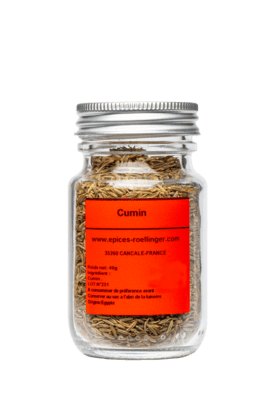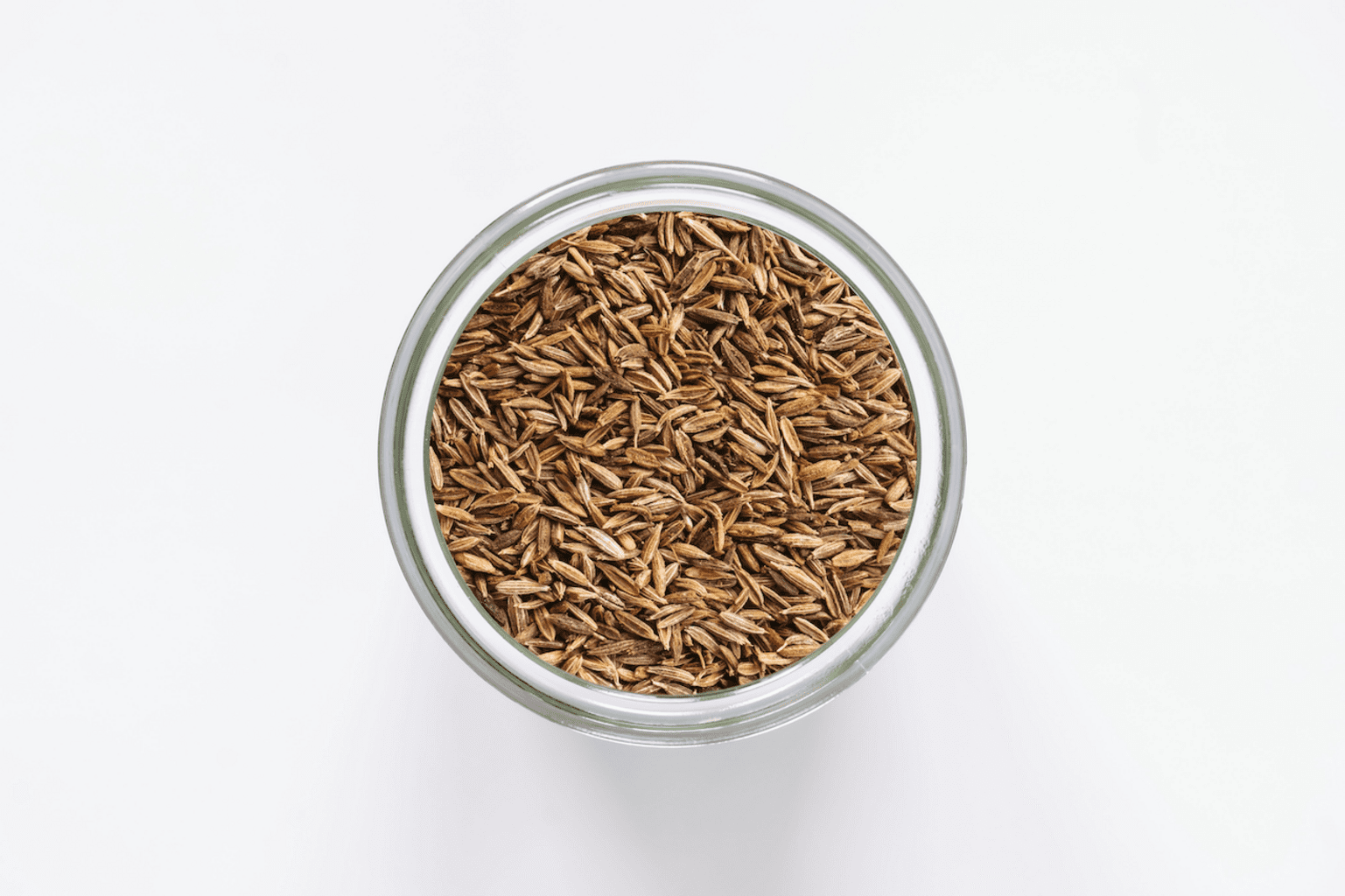Cumin, roasted

Recommendations
- Allergens Absent, except for cross-contamination. May contain traces of sesame, celery, mustard, soy.
- Origin India
- Storage / Use In a cool, dark, dry place.
The words of Olivier Rœllinger
I often dry-fry a few seeds in a pan before use, to bring out the full aroma and flavour.Cumin also goes extremely well with mint and is delicious mixed with some plain yogurt or fromage blanc as a sauce for salads. Paprika and cumin are excellent with butternut squash soup and with a purée of carrots and potatoes.
Story
This beautiful Umbellifera has the latin name of Cuminum cyminum. The brown gray elongated seeds of the plant Cuminum cyminum are no more than ¼ inch long.The seeds of Cuminum cyminum, a small annual, are dried in the sun. Be careful not to confuse cumin and caraway, which is similar in taste; both plants belong to the Umbellifera family. The way to tell them apart is that cumin is lighter in color and has a line down the center of the seed dividing it into two halves, whereas caraway is one single seed. According to legend, cumin is native to the island of Comino, northeast of Malta. The Hebrew origin of the name, however, suggests that it originated in the Middle East. It is mentioned in the Bible as a plant cultivated in gardens. Archaeologists have also found evidence of cumin cultivation in the Nile valley. The Romans used cumin lavishly for their feasts. From there, the spice spread to the Arab world, where it has remained popular ever since. As the Arab conquests expanded their sphere of influence to the east, cumin reached India and Indonesia towards the end of the first millennium CE. The crusaders brought cumin back with them from the Middle East. It was extremely popular in Spain, and ships setting sail for the New World would fill their holds with cumin.
